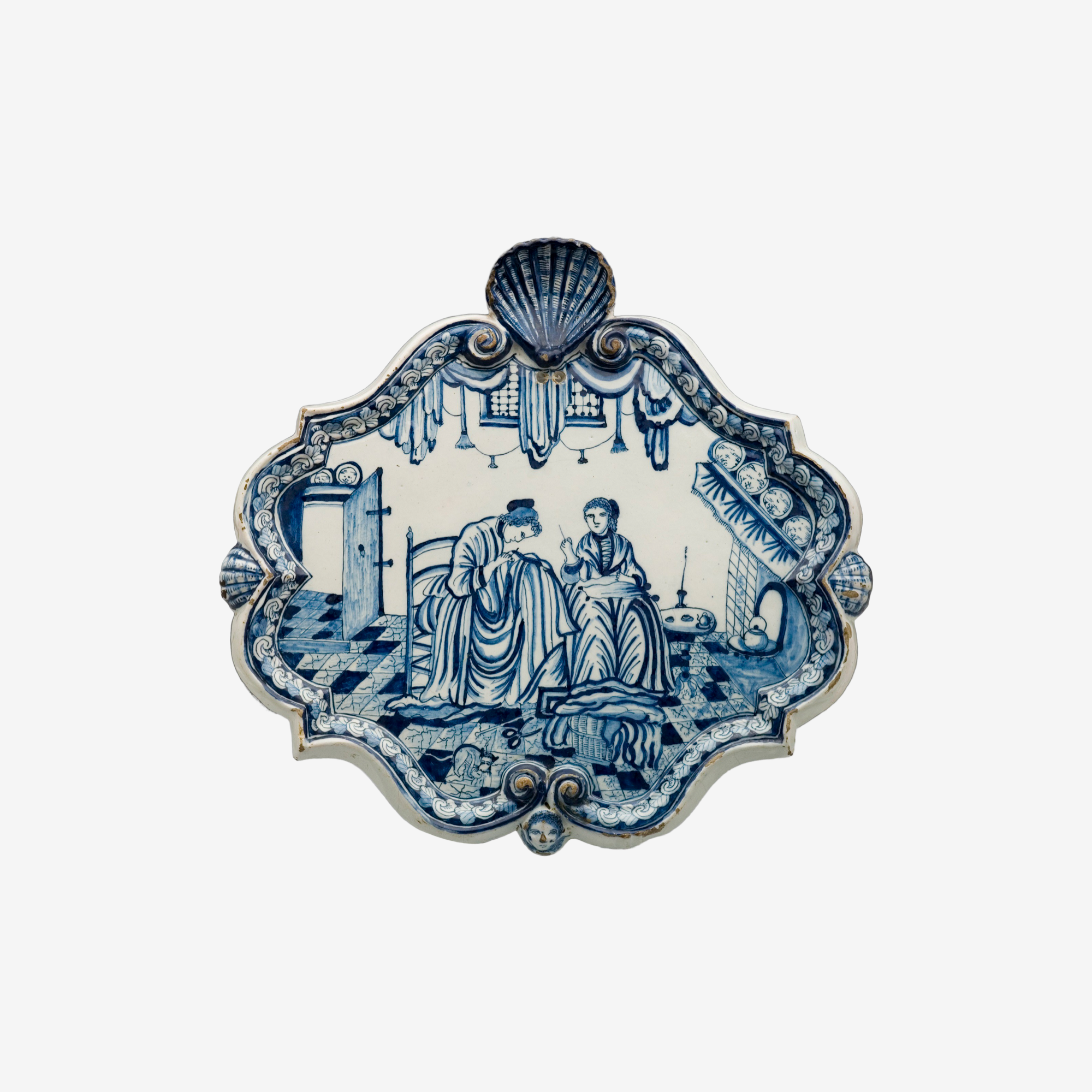- Origin:
- Delft or Rotterdam
- Date:
- Circa 1748 - 1750
- Dimensions:
- 35 x 37 cm
- Marked:
- -
Price on request
Under the influence of “father” Jacob Cats, a series of prints by Geertuyd Roghman was created in the period 1648–50, in which Dutch housewives were portrayed engaged in their activities, including two women who were sewing. He considered a woman’s role as mistress of the house, her kingdom, as being extremely important. He mentioned the woman, highly valued by Cats, as being an inspiration for the depiction of the activities described in detail in the house and garden, although she was not allowed to serve in the church or hold administrative positions in the cities for “sound reasons”.
The depiction on this plaque gives us a glimpse into a typical Dutch interior, with tiled floor, fireplace with plate rack, and draperies. This depiction has undoubtedly been the most loved of all the five prints by Roghman. There are other plaques known which feature dressmakers. People clearly had difficulty with the perspective, a problem that we often find with faience painters. As a result of advances in perspective, this plaque was probably created in Rotterdam in the factory on the Schiedamsedijk. Objects from this tile factory, where occasional ornamental items were also produced as by-products, exude a completely Delft atmosphere. The weight and the somewhat pointed shell with the somewhat thin glaze point in this direction. The plaque with a border has been embossed with the help of a form and the border has not been polished, which is common in the faience of tile factories, but not at the factory of the Aelmis family on the Schiedamsedijk.
Literature:
– Mariët Westermann Art & Home, Dutch Interiors in the Age of Rembrandt New York, 2001. Pag. 192-193. Voor de complete reeks van vijf prenten van Geetruyt Roghman
-Cat. Kent en Versint, Eer datje mint. Vrijen en trouwen 1500-1800 (Zwolle 1989) pag. 40-41. Deze plaquette maakt deel uit van de verzameling van het Fries Museum te Leeuwarden. Dutch Delftware, Aronson 125th Anniversary. Amsterdam 2006 pag. 61 no: 45.
– Dr. J.D. van Dam. “Rotterdamse faïence 1650-1850.” In: Dr. Ingrid de Jager /Dr. Nora Schadée. Tegels uit Rotterdam (2009) pag. 144-176.


